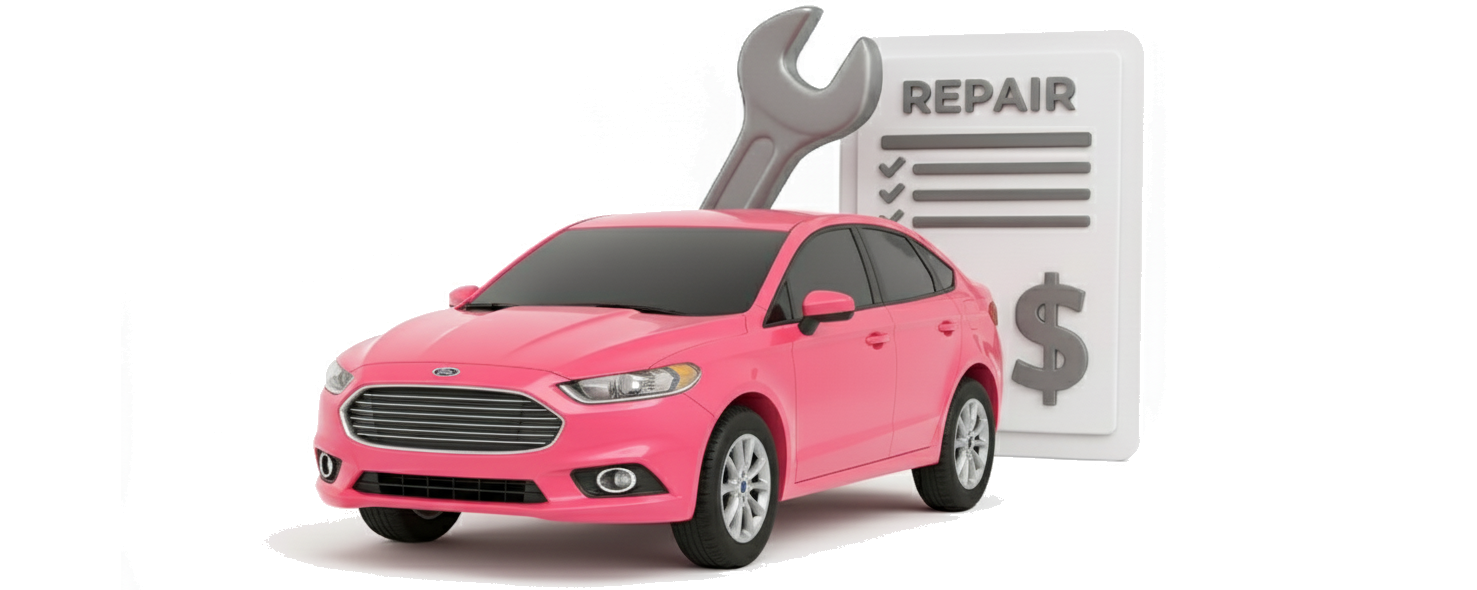The spread comes down to accessibility. The bill includes the new gasket (or pan, if required), sealant, fresh oil, and the labor to reach the oil pan.
To get a precise price for your car and location, use the Jerry app’s estimator tool.
Real customers Jerry helped
While pricing can vary based on unique factors, such as location, vehicle, and parts time, Jerry takes the guesswork out of repair pricing, using real customer experiences to show what drivers are paying right now. Here are some examples:
Estimates are modeled based on real vehicle and location data; names have been changed. Actual prices will vary by shop, parts, and vehicle condition.
The repair explained: what an oil pan gasket does
Your engine’s oil pan is the reservoir that holds motor oil when the car is off. The gasket seals the pan to the engine block to keep oil from leaking. When the gasket fails—or the pan surface warps or corrodes—oil escapes and the engine may suffer as a result, especially if the level is extremely low.
Symptoms of a leaky oil pan gasket
Oil pan leaks give clear signs, but many “pan gasket leaks” are actually leaks from higher up (valve cover, timing cover corners, oil filter housing/cooler, front/rear main seal) that run down the block. A quick verification is to clean the area, add UV dye, drive 15–20 miles, and inspect with a UV lamp—or ask your shop to do this and send photos. Jerry customers are watching for:
- Drops of oil under the engine.
- Burning-oil smell from drips on the hot exhaust.
- Topping off oil between regular changes.
Be aware of an oil pressure warning light—pressure is dangerously low right now. Pull over and shut the engine off.
Cost breakdown: why the price varies so much
Jerry customers are seeing prices vary based on complexity of oil pan access, which differs by vehicle.
Accessibility & drivetrain.
On a simple 4-cylinder, front-wheel-drive car like a 2019 Hyundai Elantra, the pan is easy to reach and the job may take ~1.5 hours. On a 4WD truck, a mechanic may need to remove the front axle or drop the subframe to access the pan, turning it into a 5–8 hour job. If the subframe moves, plan on a wheel alignment afterward.
Shop type (dealer vs. independent).
Costs shift by shop type. A dealership is typically the most expensive—labor can be ~$225/hr—and they follow workshop manuals that may require replacing one-time-use bolts and draining other fluids. An independent shop often has more flexibility and can save money.
Oil pan type.
Most pans are reusable steel or aluminum. Some newer engines, like the 2.7L and 3.0L Ford EcoBoost, use one-time-use plastic oil pans. If that pan comes off, it must be replaced, which adds to parts cost. Also budget for a replacement pan if the flange is warped, the mating surface is corroded/pitted, or threads are damaged.
Technician efficiency.
An experienced tech may know safe time-savers, such as moving a bracket instead of draining coolant when access allows.
Before you call a shop, get a detailed estimate and ask them to itemize flat-rate hours, labor rate, parts (including one-time-use bolts and sealant), any add-on labor for subframe/diff/exhaust, shop supplies, and tax. The Jerry app can help you price out these aspects of the repair ahead of time.
Your action plan: how to get it done right
Assess the severity:
Small drips usually allow continued driving while you monitor the oil level. If oil is dripping like a leaky faucet, stop driving. If the oil pressure light comes on, that’s an immediate stop-engine situation (low pressure, not just low level). Pull over safely, shut it off, and check the dipstick.
Understand your vehicle:
Ask for the book time and whether the procedure requires dropping the subframe, front differential, or exhaust. If any of those are involved, expect more labor, plan for an alignment, and allow extra sealant cure time.
Get competing quotes:
Compare detailed, written quotes from certified local shops. Confirm hours charged, labor rate, and the parts list (gasket vs. new pan, oil/filter, one-time-use bolts, sealant), plus any add-on labor for obstructions. Request photos if they’ve verified the leak source.
Check your warranty:
If the vehicle is new, oil leaks are typically covered under the factory powertrain warranty (usually 5 years/60,000 miles). Most extended warranties don’t cover gaskets because they’re “wear and tear” items—check your contract.
DIY vs. pro: what to expect
An oil pan gasket repair can be DIY—but only on simpler vehicles. Jerry’s pricing tools can help customers find parts and labor rates, making the decision on DIY vs. pro more transparent:
| Factor | DIY (Do-It-Yourself) | Professional Mechanic |
| Cost | $50–$200+ (parts only) | $500–$1,600+ |
| Time | 3 hours to multiple days – access varies (may need subframe/front diff/exhaust removal); corrosion/seized fasteners, meticulous cleaning, and RTV cure windows add hours; home setups/learning curve can stretch tim | 1.5 to 15 hours – depends on drivetrain/procedure; add-on labor for obstructions, alignment, rusted hardware, and cure windows can extend real-world clock time beyond wrench time. |
| Skill Level | Intermediate to Expert (vehicle-dependent) | Professional |
| Risk | High—improper cleaning or torque causes leaks | Low—the work is warrantied |
Reality check for DIY: You’ll need proper tools (ft-lb and in-lb torque wrenches, torque-angle gauge, gasket scraper/plastic razor, brake cleaner, RTV, jack stands, and—if the subframe moves—an engine support bar). Common failure modes include laying RTV incorrectly at block-to-timing-cover joints, over-torquing small pan bolts (stripping aluminum threads), and sealing on oily surfaces. If the procedure calls for dropping a subframe/front diff/transmission, this isn’t a driveway job—go pro.
For most vehicles, this may be best left to a professional. The risk of a failed repair and the complexity of removing major components make professional labor worth it. Whether you choose DIY or pro, use the Jerry app to price out the elements of the repair or to confirm a diagnosis – for a better repair experience.
Related services and the repair process
Some engines, like the Ford F-350 with the 6.7L diesel, have an upper oil pan that requires removing the transmission to service its gasket.
Jerry customers find that a mechanic will typically:
- Drain engine oil and remove the filter.
- Remove obstructions (axles, crossmembers, exhaust parts, etc.).
- Remove the oil pan/gasket and clean mating surfaces thoroughly.
- Install the new gasket with sealant as required, add dabs at timing cover/block joints per the manual, and reinstall the pan with the specified torque/angle; replace torque-to-yield bolts and the drain plug crush washer if applicable.
- Reassemble, refill with new oil, allow RTV cure time, and inspect with the engine running. A quick post-repair check after 100–200 miles helps confirm the fix.

What our customers are asking
-
Can I drive with an oil pan gasket leak?
-
Will my auto insurance cover this repair?
-
What happens if I wait too long to fix it?

Beginning with Hot Wheels toys as a preschooler, Rocco’s lifelong passion for cars has taken him from high school occupational courses to decades of master mechanic experience in mobile, dealership and independent auto shops.
Rocco’s professional career began in 1997 with factory Ford training in San Diego. While gaining invaluable experience in dealerships and independent shops, he went forward to complete Toyota factory training and graduated from the Universal Technical Institute near Chicago in 2009.
In 2014, Rocco opened Rocco’s Mobile Auto Repair in California servicing Los Angeles, Orange and San Diego Counties with both individual and fleet-based services. After years of success, Rocco shifted his work model from running a business to managing an independent automotive shop. Now in Tennessee, he focuses on training new technicians to be their best.

Nick Wilson is an editor, writer, and instructor across various subjects. His past experience includes writing and editorial projects in technical, popular, and academic settings, and he has taught humanities courses to countless students in the college classroom. In his free time, he pursues academic research, works on his own writing projects, and enjoys the ordered chaos of life with his wife and kids.







